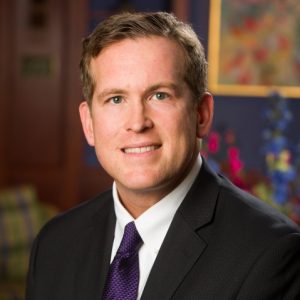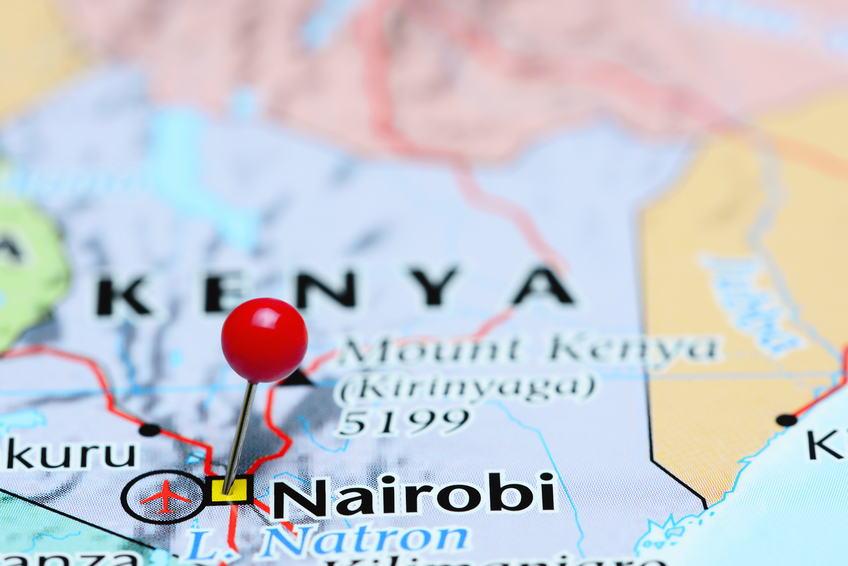This is a story that starts with Dr. Erik Hansen, who does missionary medical work in Africa and challenged a buddy from medical school to make the time to join him. It’s a story about Kijabe Hospital in Kenya, where Western-trained doctors have helped positively impact outcomes for many Africans, and about all the physicians, nurses, missionaries and natives who rise above challenges to provide levels of care we might take for granted.

It’s a story about Samaritan’s Purse, a faith-based organization that helps provide emergency relief and medical care to the developing world and takes its name from the parable of the Good Samaritan in Luke’s gospel: “Jesus said, ‘Go and do likewise.’”
And, not without some reluctance, it’s the story of a Good Samaritan who went and did likewise. Dr. Matthew Grunkemeyer, an OrthoCincy surgeon, had no misgivings about the mission; he eagerly accepted the challenge from Dr. Hansen, made a nine-week trip to Kijabe Hospital around Christmas, and in May applied skills honed there on an emergency two-week trip to earthquake-torn Ecuador.
Dr. Grunkemeyer’s reluctance is about seeing his name in print.
“Please don’t make this story that I’m this great guy,” said Dr. Grunkemeyer. “I’m a regular guy, very flawed, another human being trying to serve a good God. I want to do the best I can with the gifts, talents and skills I’ve been given.
“I think it’s important to raise awareness of Samaritan’s Purse, of Kijabe Hospital, the organizations I was blessed to be a part of, working with better people, people who stay there. It shouldn’t be about me. I’ve been blessed beyond measure to be part of it.”
Dr. Grunkemeyer was among financial supporters of Dr. Hansen’s work when he was asked to become even more invested. “He said, ‘You seem really interested in this stuff. You should come visit,’” Dr. Grunkemeyer said. “It stuck with me.”
He’s thankful for his colleagues at OrthoCincy, who agreed to cover for him for the nine weeks, beginning Dec. 12, that he spent at Kijabe. Just north of Nairobi, Kijabe’s reputation is a big draw in the region and keeps its doctors busy. “We saw patients who traveled the equivalent of New York to Los Angeles to get there,” Dr. Grunkemeyer said.
What he saw amazed him. Diseases long eradicated here, like tuberculosis. Advanced presentations of arthritis. Fractured bones that had gone untreated and didn’t mend properly. A man with a nasty fracture who drove 500 miles from Sudan, pausing when the pain became too great, then soldiering on. Small children with bone infections. “The saddest was the kids,” he said.
Dr. Grunkemeyer has four children himself; they and his wife, Sally, accompanied him to Kenya. (While there, daughter Rebecca, 12, needed a surgical procedure herself after developing a finger infection from an acacia thorn; her dad performed it successfully.)
Dr. Grunkemeyer was thrilled that his role at Kijabi, a training hospital, enabled him to show his African colleagues some Western techniques. “It’s like the old phrase, if you give a man a fish, he eats for a day; teach a man to fish and he eats for a lifetime,” Dr. Grunkemeyer said. “We were teaching African surgeons how to do orthopaedics to a high standard. That’s what made the trip for me. Hopefully I left a little bit of a legacy.”
Dr. Grunkemeyer knew he’d make another trip; he didn’t expect it to be so soon. But two months after he returned from Kenya, Ecuador was rocked by a 7.8 moment magnitude earthquake, killing hundreds and injuring thousands. He volunteered to help staff a mobile surgical hospital set up on the grounds of a badly damaged hospital in Chone, about 90 minutes south of the quake’s epicenter.
The mobile unit included inpatient beds, an outpatient clinic, an emergency room able to see more than 100 patients each day and an OR capable of seven to 10 surgeries a day.
There, Dr. Grunkemeyer put into practice a technique he’d learned at Kijabe. Without X-rays to assist surgery, he utilized a system of implanting intramedullary nails, secured by screws, to stabilize long-bone fractures. Developed by Dr. Lewis Zirkle, this SIGN IM Nail System is considered “the gold standard for surgical invention in developing nations.”
“You learn a lot in areas where resources are limited. You learn to improvise,” Dr. Grunkemeyer said. “In the developing world, patients with long-bone fractures often become incapacitated for life. If you’re incapacitated in a developing country, you lose the ability to feed your family. It’s horrible.”
The experience has changed Dr. Grunkemeyer for the better, he said.
“I love my patients, and I love my practice,” he said. “But it’s just a different level of need. We’re very blessed here in the states. We have an excellent, high-level system of care here. That’s not the case everywhere.
“I know I’ll go back. Who knows when? Once you start down this road, you can’t stop, because you see the need. That’s why you go into medicine.”
To help Samaritan’s Purse, visit samaritanspurse.org and click the Donate tab.
To donate to Kijabe Hospital, visit kijabehospital.org/make-a-difference.

